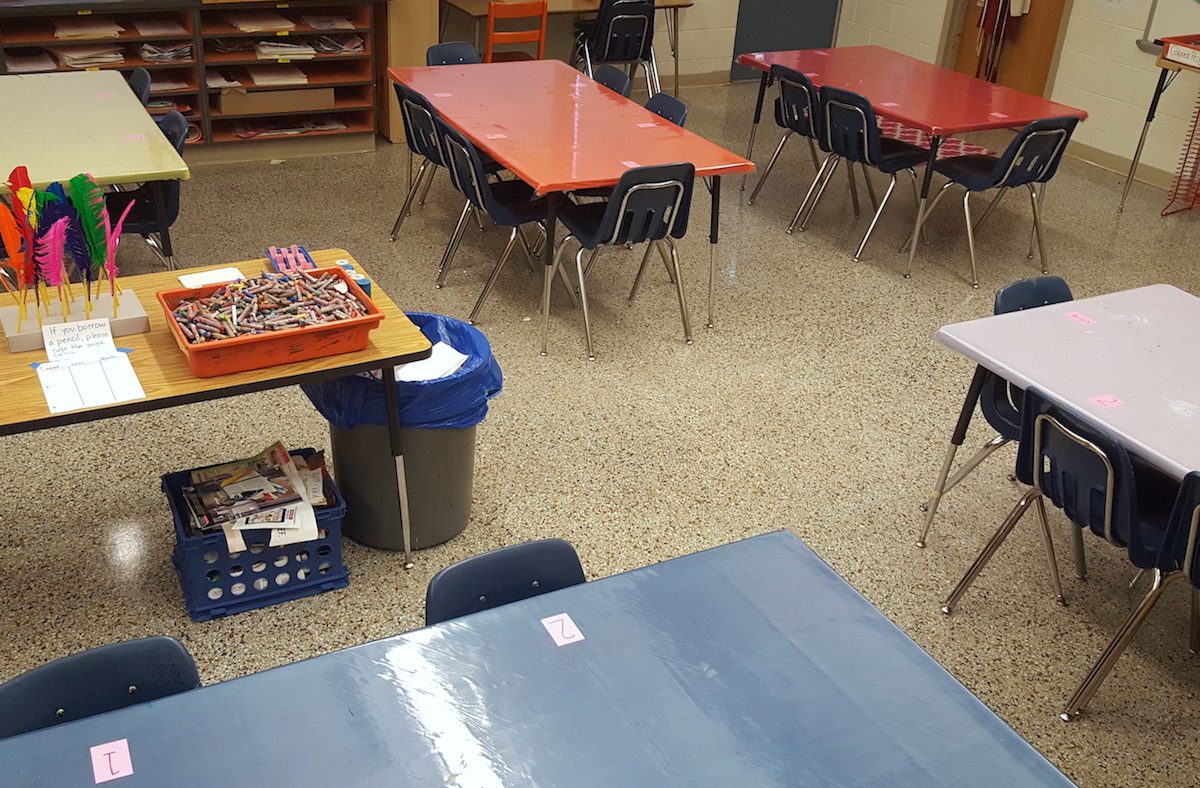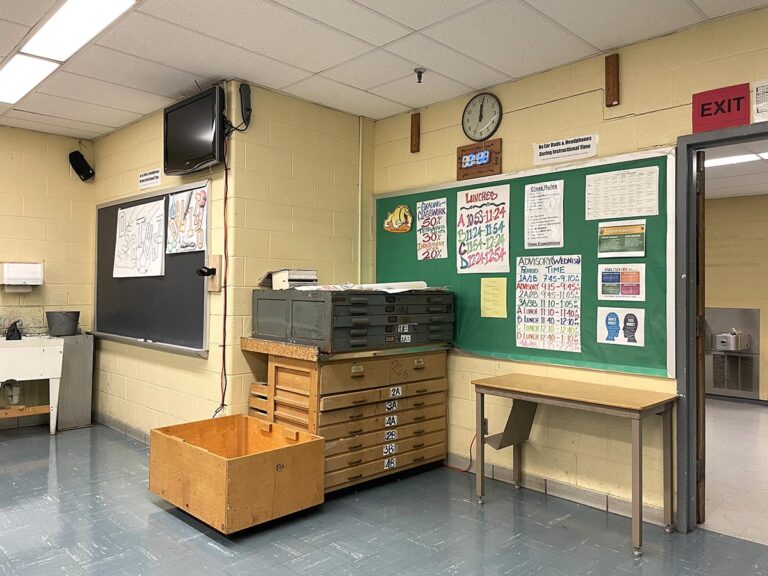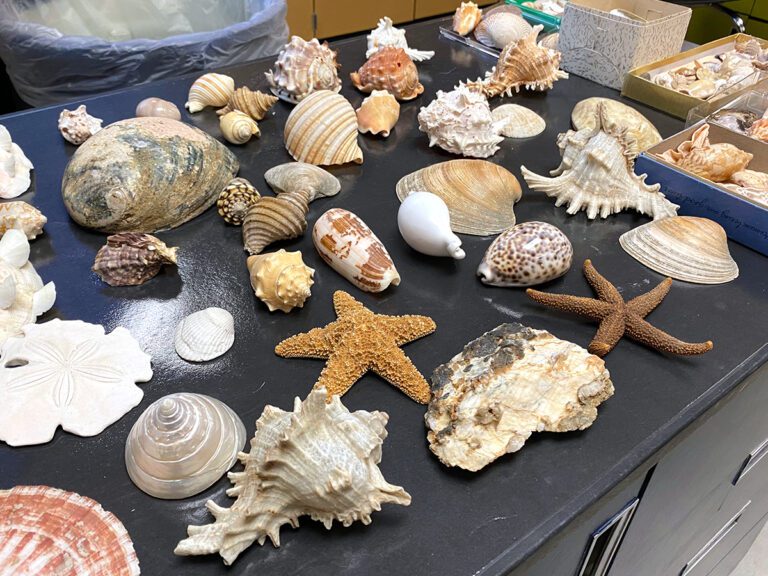As art teachers, we all know how challenging it can be to manage a busy art room. How to best hand out and collect supplies, call on students, and dismiss students can be a daunting question. With short class periods, messy materials, and large classes, it can be overwhelming!
Today I will share with you a simple system to organize your classroom using table colors and numbers.
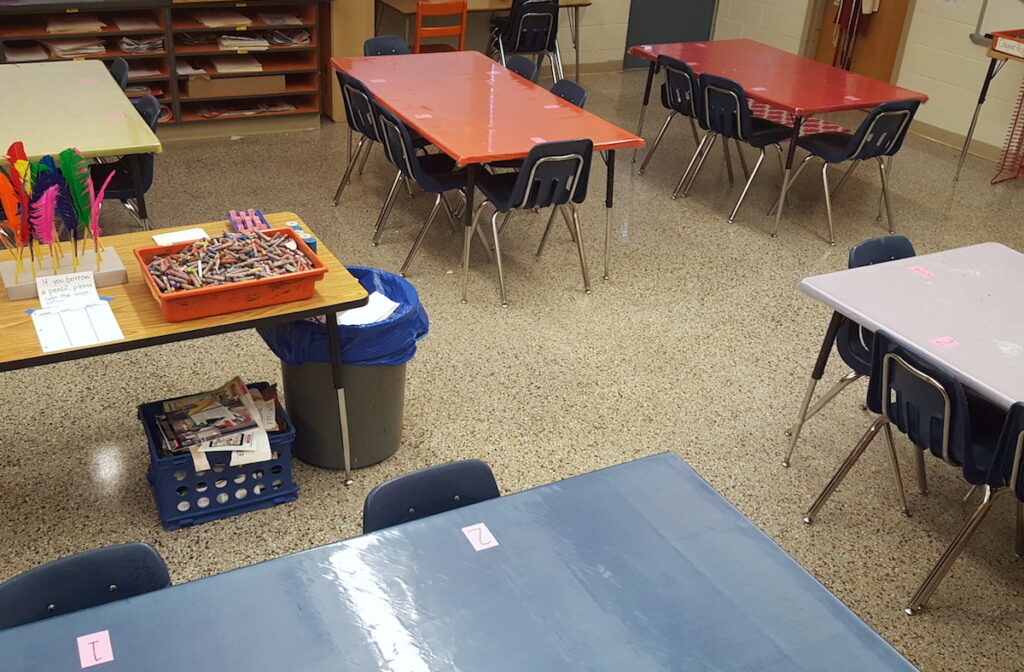
Many years ago, I realized that my new classroom was a bit bland. I had beige tables, a beige floor, and beige walls. My principal at the time told me not to hang anything on the walls because they were new and tape would damage them. The ceiling was not an option, either. It was seriously Yawnsville! I needed a way to make my classroom appear more inviting.
At the same time, I was struggling to find a system to manage the rhythms of the art room. I wanted to find a way to hand out and collect supplies with ease. I was also looking for a new system to call on students during class discussions. This simple solution solved that problem and provided me with so much more.
Each year, I cover my tables with colorful plastic tablecloths from the party store.
These are very thin and not at all durable, but the colors are beautiful. I buy one for every color of the rainbow at about 2 dollars each. They fit perfectly on my large art tables. They come in a huge array of colors. I try to get the brightest primary and secondary colors for the art room.
Then I number all my seats.
Each table seats four students. This creates a unique color and number combination for each student in the class. For example, if Michael is at the yellow table, and he is also sitting in seat three, then he is Y3 on my seating chart. Easy, peasy.
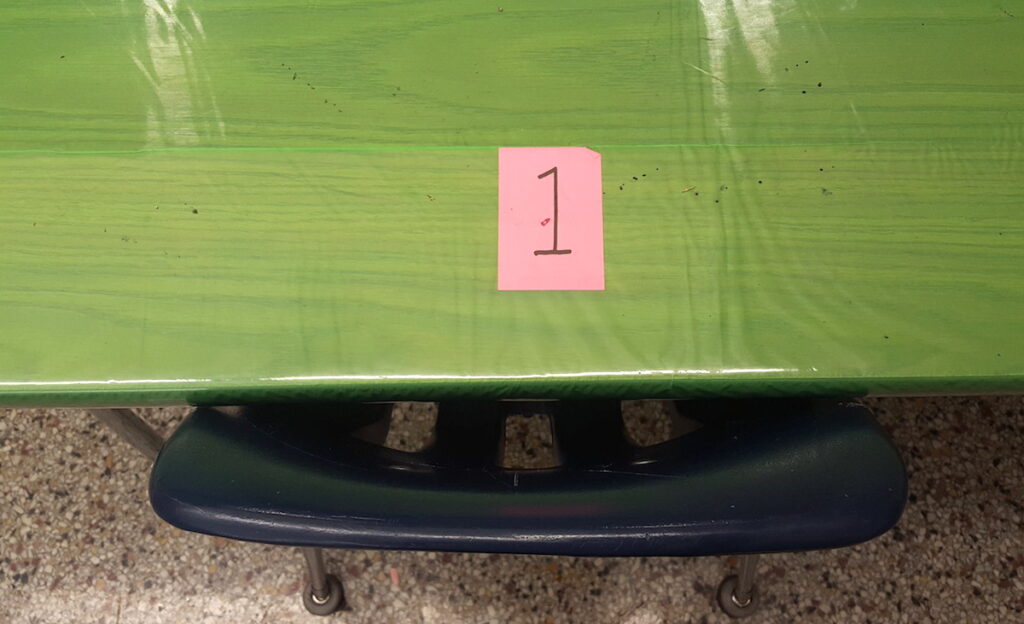
To protect my tables, I cover them with the thickest clear vinyl I can find.
I find this at my local fabric store. It comes in large rolls, so you want to be sure to know how many yards you need before you go out to buy it. I have learned over the years not to skimp on the vinyl. Only the thickest, highest quality vinyl will last the entire year. Sometimes it lasts for two years if I’m lucky!
So, what are the benefits of this simple table system?
1. You can call students by table color.
2. You can call students by number. For example “I need all my ones to come get the sketchbooks for their tables.”
3. You can call on individual students during class discussions. I use Popsicle sticks with each seat combination and pull them to call on kids. For example, “Red table, seat two, what do you think?”
4. You can call on certain color combinations. For example, “Warm colors will use the sinks first.”
5. It can also be a great tool to teach color relationships. For example, I might say “Red table and its complement may line up.”
6. It looks beautiful. I have received so many compliments over the years!
This system worked so well for me, I never tried another system after putting it in place. It is simple, but it streamlined so many different processes in my art room. I am now able to focus more on instruction and less on the messy challenges of managing a busy art room.
What table system do you use?
How do you streamline the management challenges of the art room?
Magazine articles and podcasts are opinions of professional education contributors and do not necessarily represent the position of the Art of Education University (AOEU) or its academic offerings. Contributors use terms in the way they are most often talked about in the scope of their educational experiences.
